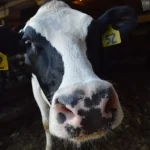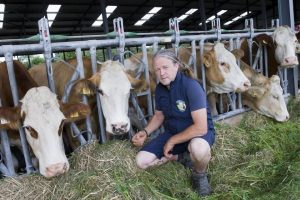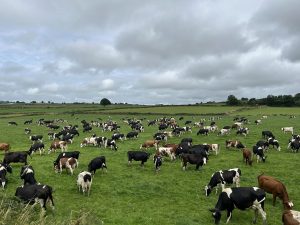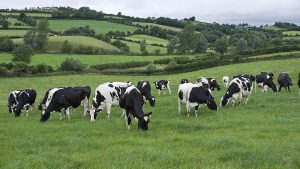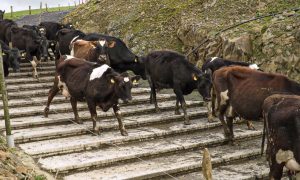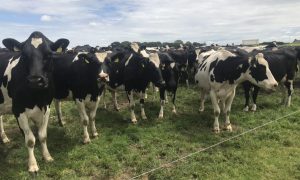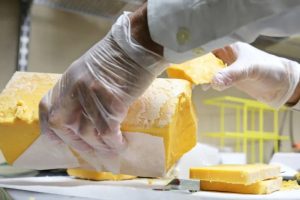
Limerick RVL (Regional Veterinary Lab) conducted an investigation into a case whereby up to fifteen dairy cows had died during an BVD outbreak.
Its work began with the examination of three Friesian cows from the high-yielding dairy herd, according to a report contained in the Veterinary Ireland Journal.
There was a history of diarrhoea, fever, milk drop, respiratory distress, and death.
Freshly calved cows were mostly but not exclusively impacted and new cases were emerging daily.
The herd had not been vaccinating for BVD (Bovine Viral Diarrhoea), but one newborn calf had recently tested positive on the tissue tag test.
The first cow submitted was a five-year-old with a history of bloody scour, the report noted.
Necropsy (another term for autopsy) disclosed thickened abomasal mucosa and some adult rumen fluke in the reticulum.
Intestinal contents were completely liquid; bloody in one short section, yellow/ brown elsewhere.
The mucosal surface was thickened and corrugated and lungs were “extremely” pale, the report added.
There was a pestivirus-positive result on PCR, likely due to bovine viral diarrhoea (BVD) virus infection.
Intestinal contents were positive on mycobacterium culture for Mycobacterium avium subspecies paratuberculosis (MAP), the causative organism of Johne’s disease.
This finding is consistent with the thickening seen in the intestinal mucosa, the lab report added.
The follow-up submission was of two cows, both had gross lesions of enteritis (inflammation of small intestine).
According to the report, “lesions were particularly severe in one of the cows where there was a haemorrhagic ulcerative typhlitis”.
The lab detected BVD virus in both cows.
Lab report conclusion
A spokesperson said: “A follow-up investigation concluded that a transient BVD infection had passed through the herd following recent exposure to BVD virus.”
“Up to fifteen cows died during the outbreak, highlighting the risks associated with the entry of BVD virus into an immunologically naïve herd (no exposure, no vaccination).”
“The involvement of other agents whose impact may be exacerbated by BVD virus infection, such as Salmonella sp. is being examined; the potential role of mycotoxins is also being investigated.”
3 measures
In a previous article on www.thatsfarming.com, we looked at the DAFM’s strict vet-led protocol for herds where a BVD-positive or inconclusive result(s) has been detected.
As a first course of action, herdowners must isolate and remove all animals with an initial positive or inconclusive test ear-notch result, in which case, confirmatory re-testing of these animals is no longer committed.
Farmers must remove these animals “promptly” to obtain higher financial support from the DAFM.
Herdowners must clean and disinfect buildings and handling facilities which may have been contaminated “as soon as practicable” but in advance of the next breeding season.
According to Animal Health Ireland, the lifting of restrictions requires the completion of each of the following three measures, which are fully funded by the DAFM.
Measures as follows:
- Whole herd test – Blood sampling and testing of all animals in the herd;
- Epidemiological investigation – Conducted under the Targeted Advisory Service on Animal Health (TASAH) under the Rural Development Programme;
- Vaccination of all female animals aged 12-months-old and above by the nominated PVP.


